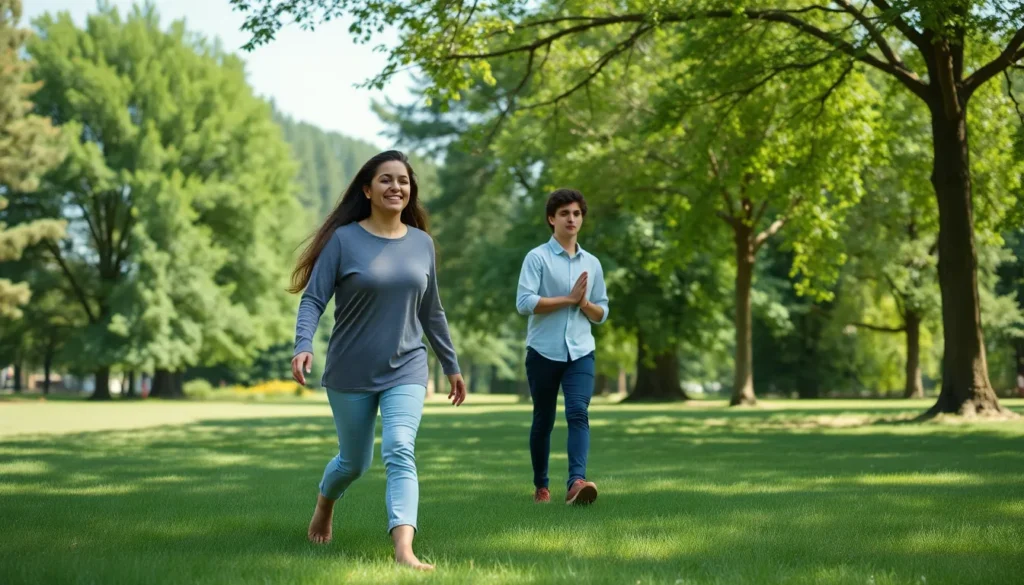In a world buzzing with distractions and endless to-do lists, mindfulness practices might just be the secret sauce for reclaiming sanity. Imagine sipping your morning coffee while actually tasting it, instead of scrolling through your phone like a caffeinated zombie. Mindfulness invites you to hit pause on the chaos and tune into the present moment.
But what exactly are these practices, and why should anyone care? They’re not just for yogis on mountaintops or those who can meditate for hours without a single thought. Mindfulness can fit into even the busiest lives, offering a refreshing escape from the daily grind. Whether it’s a quick breathing exercise or a mindful walk around the block, these practices can transform ordinary moments into extraordinary experiences. So, let’s dive into the world of mindfulness and discover how it can sprinkle a little zen into everyday life.
Table of Contents
ToggleOverview of Mindfulness Practices
Mindfulness practices encompass various techniques designed to foster awareness and presence in everyday moments. Many individuals approach mindfulness through meditation, but numerous other practices exist. These techniques can include mindful breathing, body scanning, or focused attention exercises.
Mindful breathing encourages individuals to concentrate on their breath, noticing the inhale and exhale. This technique reduces stress and promotes relaxation. Additionally, body scanning involves paying attention to different parts of the body, releasing tension and enhancing bodily awareness.
Mindful walking allows participants to connect with their surroundings. Focusing on each step, individuals can find a sense of peace in movement. Engaging in daily activities, such as eating or showering, with awareness transforms them into mindfulness practices, elevating routine tasks into enriching experiences.
Participants often find guided meditation helpful. Various apps and online resources provide structured sessions, making it easier to engage in mindfulness. Furthermore, practicing gratitude enhances mindfulness. Recognizing and appreciating positive aspects of life fosters a more optimistic outlook.
Establishing a regular routine improves consistency in practicing mindfulness. Dedicating even a few minutes daily can yield significant benefits. Mindfulness practices help cultivate emotional resilience, maintaining calm despite chaos. Ultimately, these techniques empower individuals, offering tools to navigate stressors in their lives effectively.
Different Types of Mindfulness Practices

Mindfulness practices encompass various techniques aimed at enhancing awareness and presence. These methods can easily fit into daily routines, promoting emotional resilience and stress management.
Meditation Techniques
Meditation techniques play a pivotal role in mindfulness. They often include focused attention, body awareness, and loving-kindness practices. Focused attention directs thoughts to a single point, such as the breath. Body awareness shifts focus to bodily sensations, fostering a deeper connection to one’s physical state. Loving-kindness meditation encourages participants to cultivate feelings of compassion, enhancing emotional well-being.
Breathing Exercises
Breathing exercises serve as a fundamental mindfulness practice. Techniques like diaphragmatic breathing promote relaxation by engaging the diaphragm fully. This engages the body’s relaxation response, effectively reducing stress levels. Other exercises, such as box breathing, involve inhaling, holding, exhaling, and pausing for equal counts, improving focus and calmness throughout the day.
Mindful Movement
Mindful movement integrates physical activity with awareness. Practices such as yoga and tai chi emphasize intentional movements alongside breath. These activities enhance physical fitness while encouraging a present-moment focus. Walking meditations, another form, incorporate slow, deliberate steps, fostering awareness of surroundings and sensations.
Benefits of Mindfulness Practices
Mindfulness practices offer numerous advantages that enhance overall well-being. They play a significant role in improving both mental and physical health.
Mental Health Advantages
Mindfulness practices enhance emotional regulation and reduce symptoms of anxiety and depression. Research highlights that regular engagement in mindfulness meditation leads to a measurable decrease in stress levels. Participants often experience heightened self-awareness, allowing them to recognize and address negative thought patterns. Studies also indicate that mindfulness fosters resiliency, helping individuals cope more effectively with life’s challenges. Additionally, improved focus and concentration emerge as frequent benefits, contributing to increased productivity in daily tasks.
Physical Health Benefits
Mindfulness practices positively impact various aspects of physical health. Individuals report reduced blood pressure and enhanced cardiovascular health through practices like mindful breathing and meditation. Improved sleep quality is another significant advantage, as mindfulness aids in relaxation and decreases insomnia symptoms. Regular mindfulness exercise facilitates better immune function, promoting overall vitality. Furthermore, immersive movements like yoga or tai chi help enhance flexibility and reduce bodily tension, contributing to an enriched physical state.
How to Incorporate Mindfulness into Daily Life
Mindfulness can seamlessly fit into daily routines, enhancing awareness and presence. Practitioners can begin with simple techniques and build consistency over time.
Simple Techniques for Beginners
Starting with mindful breathing helps individuals focus on their breath. Practicing this technique for just a few minutes daily fosters relaxation. Body scanning serves as another useful method, allowing awareness of body sensations and promoting tension release. Engaging in mindful walking transforms ordinary strolls into enriching experiences by encouraging attentiveness to surroundings. Incorporating mindful eating creates awareness during meals, promoting healthier choices and deeper appreciation for food. Each of these techniques offers a gateway into mindfulness, welcoming individuals into the practice.
Building a Consistent Practice
Establishing a daily routine strengthens commitment to mindfulness. Setting aside specific times each day enhances the likelihood of sticking with the practice. Morning sessions can prepare individuals for the day ahead, while evening practices may serve as a calming conclusion. Utilizing apps for guided meditations introduces structure and variety, catering to personal preferences and needs. Starting small with just five to ten minutes helps ease individuals into longer sessions over time. Gradually increasing practice duration boosts overall effectiveness, allowing individuals to experience increased benefits.
Mindfulness practices offer a powerful way to enhance daily living. By integrating techniques like mindful breathing and body scanning into routines, individuals can cultivate a deeper awareness of their surroundings and themselves. This approach not only reduces stress but also fosters emotional resilience and improves overall well-being.
As individuals explore various mindfulness methods, they’ll likely discover the profound impact these practices can have on their mental and physical health. Establishing a consistent routine, even in brief moments, can lead to lasting benefits. Embracing mindfulness is a journey toward a more balanced and fulfilling life, providing tools to navigate the complexities of modern existence with clarity and calm.





